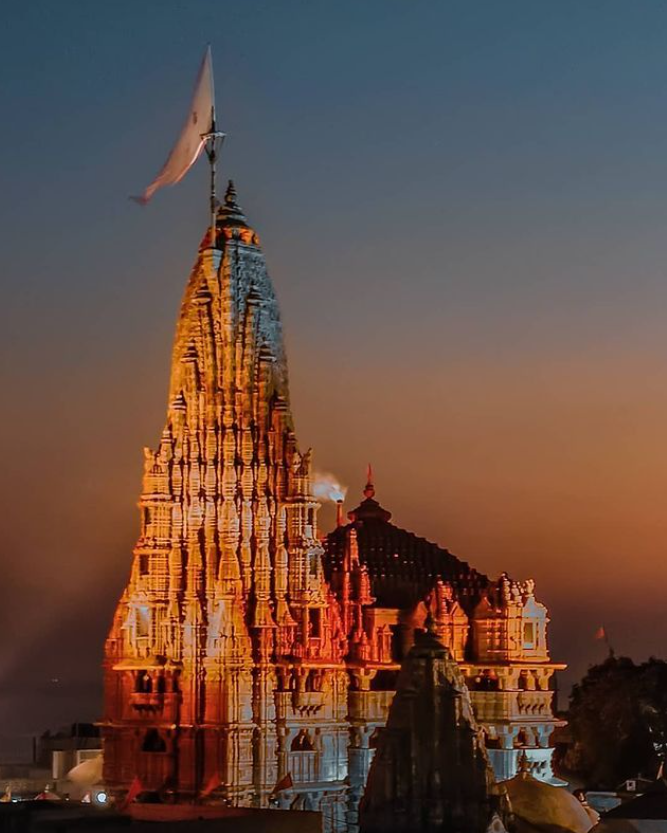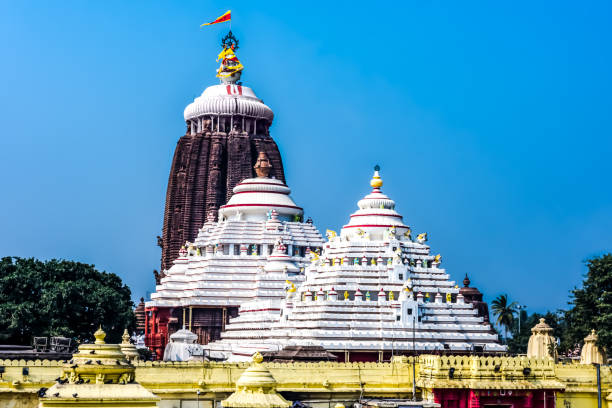Exploring the Sacred Char Dham Yatra in India: A Journey to Spiritual Awakening
Understanding the Significance of Char Dham in India
India, a land known for its rich spiritual heritage and diverse religious practices, is home to numerous sacred pilgrimage sites. Among these, the Char Dham Yatra holds a place of utmost reverence and significance. Char Dham, which translates to “four abodes,” refers to the four holy shrines located in the four corners of India. These include Badrinath in the north, Dwarka in the west, Rameswaram in the south, and Puri in the east. This pilgrimage is considered one of the most important in Hinduism, with millions of devotees undertaking the arduous journey each year in the pursuit of spiritual enlightenment and liberation.
The Four Sacred Abodes of Char Dham
Badrinath: The Abode of Lord Vishnu in the North

Badrinath, nestled in the serene surroundings of the Garhwal Himalayas in Uttarakhand, is dedicated to Lord Vishnu, one of the principal deities of Hinduism. Located at an altitude of 3,300 meters above sea level, this holy town is revered as one of the 108 Divya Desams, which are sacred places for Vaishnavites. The temple’s history dates back to the Vedic period, and it has been a major center of pilgrimage for centuries.
The Badrinath Temple is not just a place of worship but also a symbol of spiritual perseverance. The journey to Badrinath, often challenging due to its high altitude and harsh weather conditions, is seen as a test of faith and devotion. According to Hindu mythology, Lord Vishnu meditated in this region, earning the area the name ‘Badri’ which means ‘berry.’ The belief that a pilgrimage to Badrinath can cleanse the soul and lead to Moksha (liberation) draws countless devotees to this sacred site each year.
Dwarka: The Kingdom of Lord Krishna in the West

Dwarka, situated on the western coast of Gujarat, is one of the seven ancient cities in India, often referred to as ‘Sapta Puri.’ This sacred town is associated with Lord Krishna, who is believed to have established his kingdom here after leaving Mathura. The Dwarkadhish Temple, also known as Jagat Mandir, stands as a testament to the town’s historical and spiritual significance.
Dwarka is not just a place of worship but also a city rich in mythology and legends. According to ancient scriptures, the original Dwarka city was submerged under the sea, and the present-day Dwarka is believed to be a part of that ancient kingdom. Pilgrims visit this site to seek blessings from Lord Krishna and to immerse themselves in the divine energy that is believed to pervade the entire region.
Rameswaram: The Southern Abode of Lord Shiva

Rameswaram, located in Tamil Nadu, is the southernmost of the Char Dhams and holds great significance in the Shaiva tradition of Hinduism. The Ramanathaswamy Temple, dedicated to Lord Shiva, is one of the twelve Jyotirlingas, which are sacred shrines dedicated to Shiva. The temple’s architecture, with its towering gopurams and intricate carvings, is a marvel in itself.
The significance of Rameswaram is deeply rooted in the epic Ramayana. It is believed that Lord Rama, along with his wife Sita and brother Lakshmana, worshipped Lord Shiva at this site to atone for the sin of killing Ravana, a Brahmin king. The pilgrimage to Rameswaram is considered essential for Hindus, as it is believed that a visit to this holy site can wash away one’s sins and pave the way for spiritual liberation.
Puri: The Eastern Abode of Lord Jagannath

Puri Jagannath, located on the eastern coast of Odisha, is famous for the Jagannath Temple, dedicated to Lord Jagannath (a form of Lord Vishnu). This temple is one of the most revered pilgrimage sites in India and is especially known for the annual Rath Yatra (chariot festival), which attracts millions of devotees from around the world.
The temple’s significance goes beyond its religious importance. It is a cultural and spiritual hub that has influenced the traditions and practices of Hinduism for centuries. The deities in the Jagannath Temple are unique, with Lord Jagannath, his brother Balabhadra, and sister Subhadra being worshipped together. The temple is also associated with the Bhakti movement, and saints like Chaitanya Mahaprabhu have contributed to its prominence.
The Spiritual Significance of the Char Dham Yatra
A Journey of Faith and Devotion
The Char Dham Yatra is not just a physical journey but a deeply spiritual one. For centuries, Hindus have believed that undertaking this pilgrimage can purify the soul, cleanse one of sins, and lead to Moksha. The arduous nature of the journey, which involves traversing mountainous terrains, braving harsh weather conditions, and traveling long distances, is seen as a testament to one’s faith and devotion.
The Concept of Moksha and Liberation
Moksha, or liberation from the cycle of birth and death, is the ultimate goal of Hinduism. The Char Dham Yatra is considered a path to achieving this goal. Each of the four shrines is associated with different aspects of spiritual enlightenment. Badrinath is believed to bestow knowledge, Dwarka grants devotion, Rameswaram offers absolution, and Puri provides liberation. Together, they encompass the essence of Hindu spirituality and philosophy.
The Role of Rituals and Prayers
Rituals and prayers are an integral part of the Char Dham Yatra. Each shrine has its own set of rituals, which are performed by devotees with great reverence. These rituals are believed to invoke the blessings of the deities and ensure the success of the pilgrimage. The chanting of hymns, the offering of prasad, and the performance of aarti are some of the common practices observed at these temples.
The Historical and Cultural Importance of Char Dham
The Legacy of Adi Shankaracharya
The Char Dham Yatra is closely associated with Adi Shankaracharya, the 8th-century philosopher and theologian who played a crucial role in revitalizing Hinduism. He established the four dhams as major pilgrimage sites and contributed to their prominence in the Hindu religious landscape. Adi Shankaracharya’s efforts in unifying different sects of Hinduism and promoting the worship of these four shrines have had a lasting impact on Indian spirituality.
The Influence on Indian Art and Architecture
The temples of Char Dham are not just places of worship but also architectural masterpieces. The intricate carvings, grand gopurams, and elaborate rituals reflect the rich cultural heritage of India. These temples have influenced the development of temple architecture across the country and have inspired countless artists, poets, and scholars.
The Char Dham Yatra in Modern Times
In contemporary India, the Char Dham Yatra continues to hold immense significance. Despite the advancements in transportation and infrastructure, the pilgrimage remains a challenging and transformative experience. The Indian government and various organizations have made efforts to improve the facilities for pilgrims, ensuring that more people can undertake this sacred journey.
Preparing for the Char Dham Yatra
Best Time to Visit
The ideal time to embark on the Char Dham Yatra is between April and November. During these months, the weather is relatively pleasant, and the temples are accessible. However, it is essential to check the specific opening and closing dates of the temples, as they are usually closed during the winter months due to heavy snowfall, especially in the northern regions like Badrinath.
Essential Travel Tips
Undertaking the Char Dham Yatra requires thorough preparation. Pilgrims should be physically fit, as the journey involves long treks and steep climbs, particularly in Badrinath and Kedarnath (if included). It is advisable to carry warm clothing, as temperatures can drop significantly, even during the summer months. Additionally, pilgrims should carry essential medications, as the high altitudes can cause altitude sickness.
The Role of Faith in the Journey
Faith is the cornerstone of the Char Dham Yatra. For many devotees, the journey is as much about inner reflection and spiritual growth as it is about reaching the physical destinations. The belief in the divine presence at these sites, combined with the rigorous journey, serves as a catalyst for spiritual awakening. Pilgrims often return from the Char Dham Yatra with a renewed sense of purpose, having experienced the profound peace and spiritual energy that these sacred places emanate.
Conclusion: The Everlasting Appeal of the Char Dham Yatra
The Char Dham Yatra is more than just a pilgrimage; it is a journey to the very heart of Hindu spirituality. For centuries, it has inspired countless devotees to seek out these sacred abodes in their quest for divine connection and liberation. The significance of the Char Dham Yatra lies not just in its religious importance but also in its ability to transcend time, offering spiritual solace to all who undertake it. Whether it is the majestic beauty of Badrinath, the historical legacy of Dwarka, the spiritual depth of Rameswaram, or the cultural vibrancy of Puri, each of these sites contributes to the rich tapestry of India’s spiritual heritage. The Char Dham Yatra remains a timeless journey that continues to inspire and uplift the human spirit, reaffirming the deep connection between the divine and the devotee.
